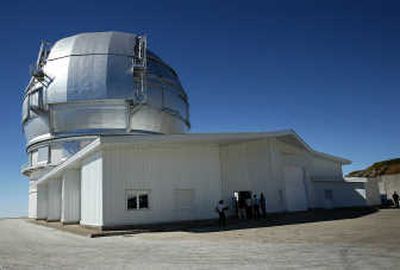Canary Islands telescope opens for business

TENERIFE, Canary Islands – One of the world’s largest and most powerful telescopes opened its shutters, turned its 34-foot wide mirror toward the skies and captured its first light at a mountaintop on one of Spain’s Canary Islands on Saturday.
The $179 million Great Canary Telescope, designed to take advantage of pristine, clear skies at the Roque de los Muchachos observatory atop the Atlantic island of La Palma, should be fully operational by May 2008.
On a crystal-clear night, Spain’s Crown Prince Felipe keyed in the computer codes which brought the observatory’s complex machinery to life.
Slowly, 12 of the telescope’s eventual 36 mirrors aimed at a twin star close to the Earth’s northern axis, near the North Star. Twelve images merged into one as the telescope focused.
Among those in La Palma for the opening was Brian May, lead guitarist of pop group Queen, who studied part of his doctorate in astrophysics at the Canary Island institute.
May, who recently published “BANG! The Complete History of the Universe” with astronomers Patrick Moore and Chris Lintott, said he was adding the finishing touches to a musical score which will be played at the telescope’s inauguration next summer.
Planning for the GTC began as long ago as 1987, when the nearby William Herschel telescope with a 13.8 feet diameter mirror became operational. Construction work took seven years.
“With this (telescope) it will be possible to capture the birth of new stars, to study more profoundly the characteristics of black holes or to decipher the chemical components generated by the Big Bang,” the institute said.
The GCT is among the world’s largest telescopes like the newly opened Southern African Large Telescope – Salt – which has a 36-foot mirror and has been described the southern hemisphere’s largest single optical telescope and the Hobby-Eberly telescope on Mount Fowlkes, Texas, which also has an 36-foot mirror.